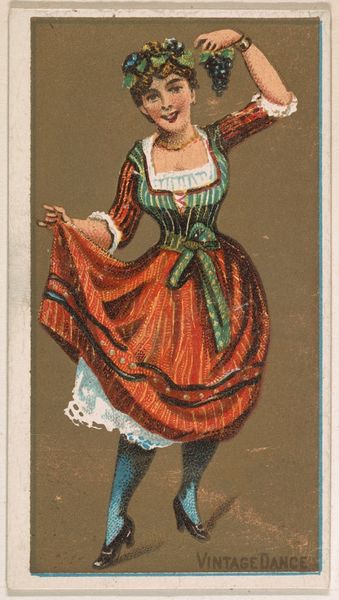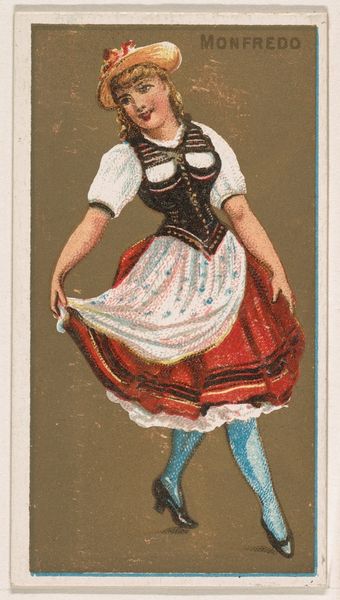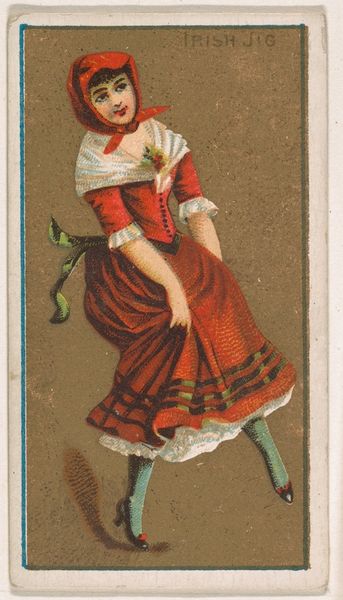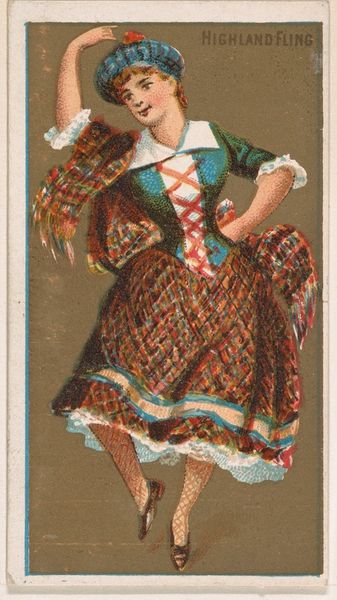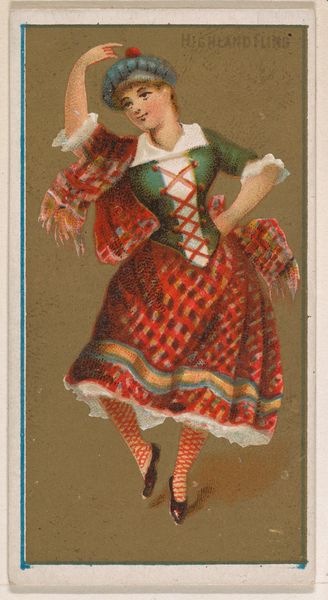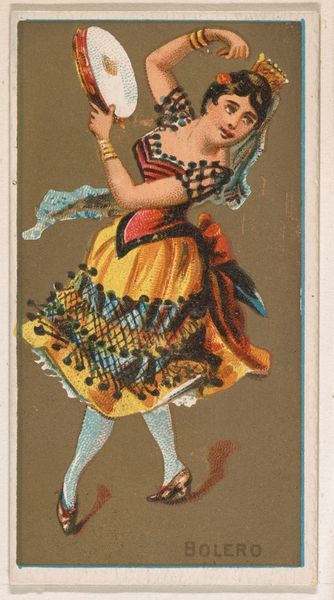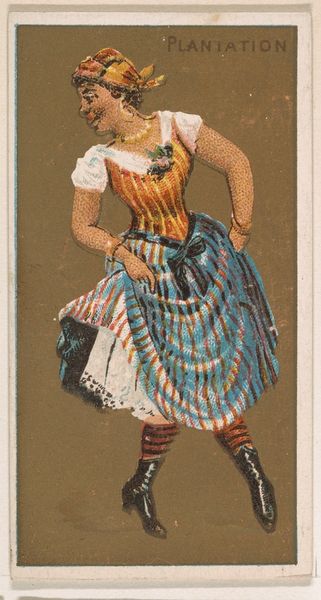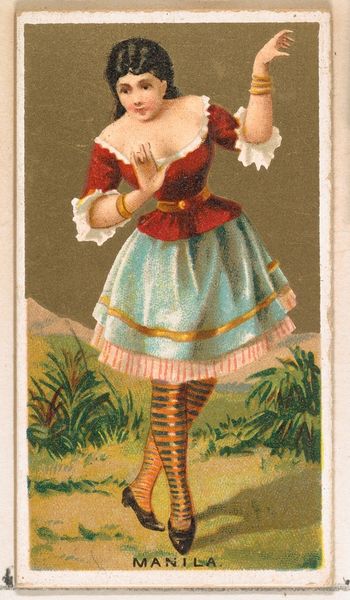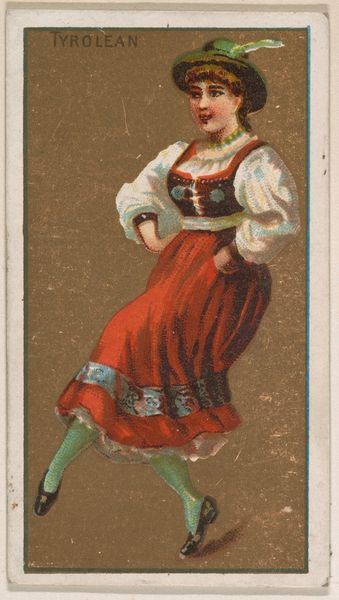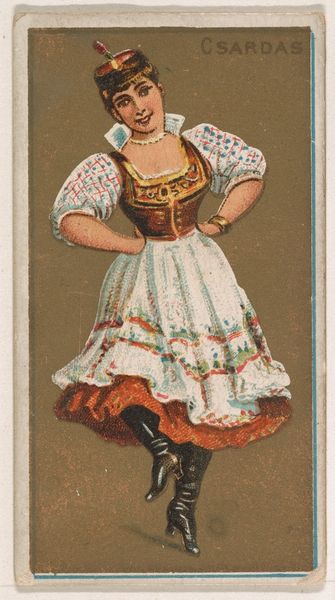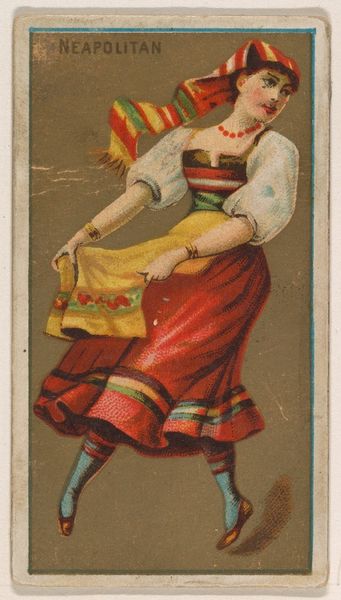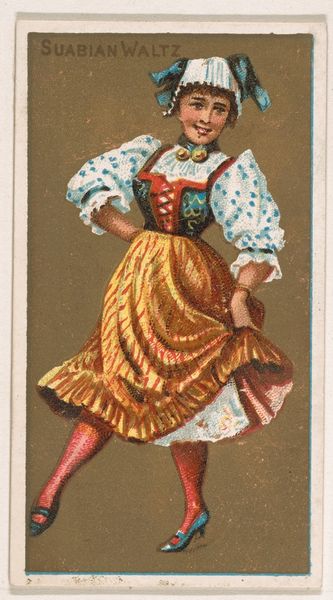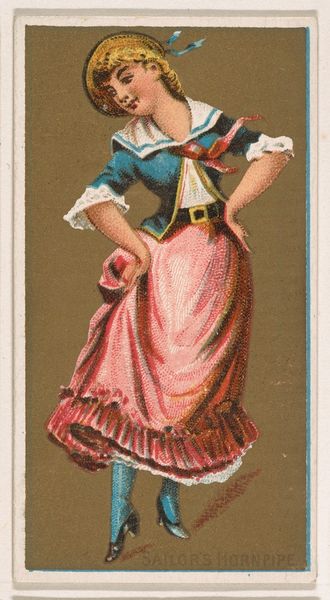
Plantation, from National Dances (N225, Type 1) issued by Kinney Bros. 1889
0:00
0:00
drawing, print
#
portrait
#
drawing
#
narrative-art
# print
#
folk art
#
folk-art
#
genre-painting
Dimensions: Sheet: 2 3/4 × 1 1/2 in. (7 × 3.8 cm)
Copyright: Public Domain
Editor: Here we have "Plantation, from National Dances," a print made in 1889 by Kinney Brothers Tobacco Company. There is a bold and vibrant use of color here; stripes create the movement of a performer seemingly in mid-dance. How would you approach an interpretation of this piece? Curator: From a formal perspective, the strategic arrangement of line and color are paramount. Observe the contrasting orientations of the stripes: vertical in the bodice, horizontal in the stockings, and curvilinear in the skirt, exaggerating the motion implied in the figure's pose. This creates an optical dynamism, doesn’t it? Editor: Yes, it really makes her stand out against that brown backdrop. Is there significance to the colours themselves? Curator: The vibrant palette – predominantly reds and blues – draws the eye, and contributes to a feeling of theatricality, or spectacle. Further, the interplay between figure and ground is compelling. Note how the artist uses a limited tonal range, yet achieves a remarkable depth. What’s your sense of the overall structure? Editor: I see the dress mirroring the same shape on the body as on the print itself, drawing parallels between form and material, as well as suggesting depth despite the artwork being only a single flat plane. Curator: Precisely. This invites an inquiry into how line, shape and colour operate on a formal level. These components aren’t just decorative; they contribute meaningfully to how we engage with the visual language employed. I appreciate the focus on these aesthetic properties, which often become obscured by narratives around historical context. Editor: This exercise has highlighted how to use semiotics to decode and appreciate an artwork's message. It also shows that form is itself content. Thank you! Curator: The pleasure was all mine. Thinking about the components of shape and movement definitely provides new perspectives to consider when analyzing other art!
Comments
No comments
Be the first to comment and join the conversation on the ultimate creative platform.
